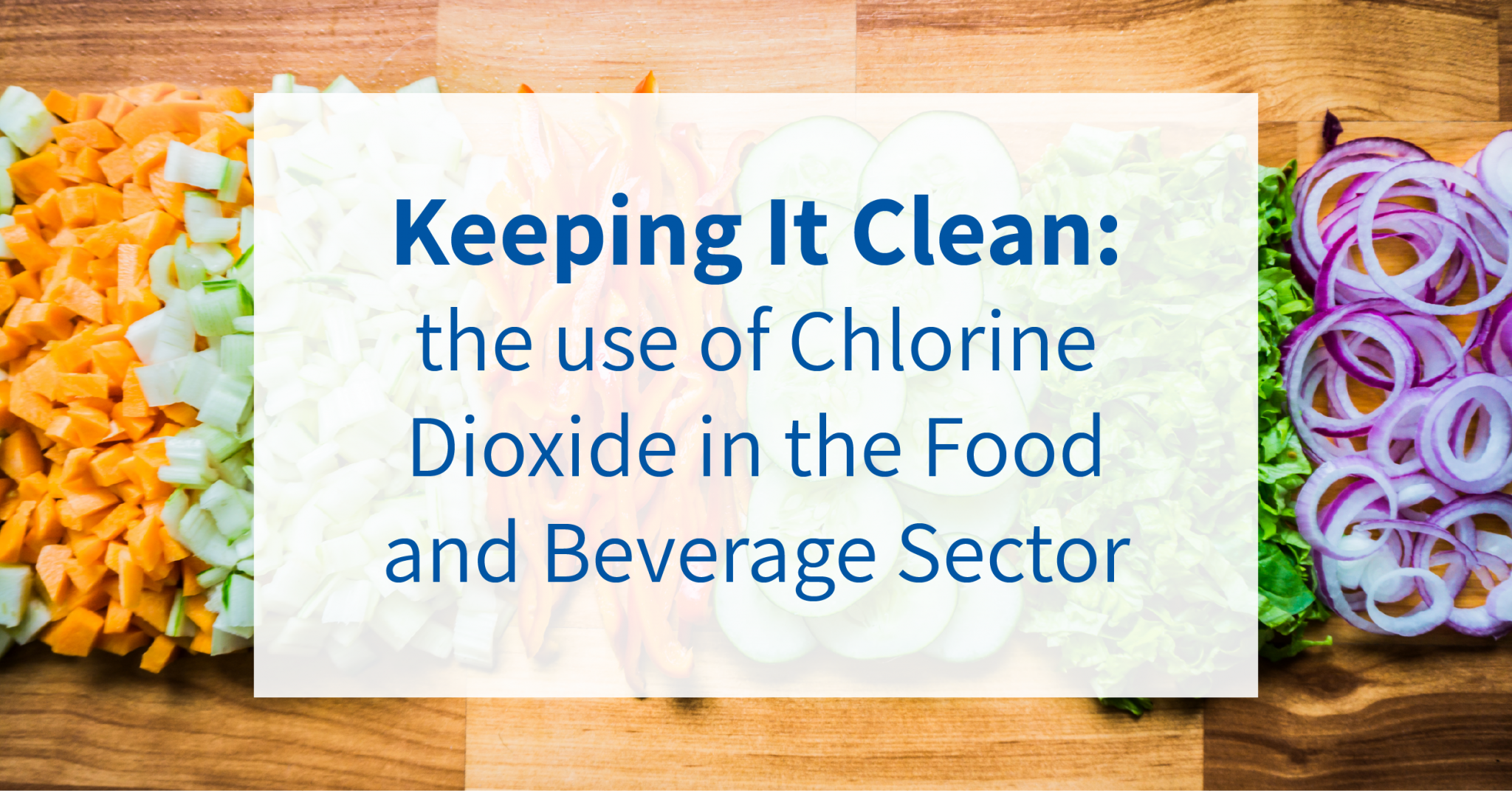
Keeping It Clean: the use of Chlorine Dioxide in the Food and Beverage Sector
Chlorine dioxide is rising in prominence as the best water treatment additive for the food and drinks industry. It’s powerful and economical, and may be a more practical solution for food-grade facilities than other options such as chlorine or bromine. Chlorine dioxide is also relatively odorless, another big plus for this sector.
What is Chlorine Dioxide (ClO2)?
Chlorine Dioxide is a fast acting disinfectant, used in many different water treatment systems around the world. It’s a yellow or reddish-yellow gas, which breaks down into chlorine gas and oxygen when heated. Chlorine dioxide is quite volatile so it is usually manufactured as a stable solution on site and on demand to avoid some of the issues associated with safe storage.
How is Chlorine Dioxide solution made?
Chlorine dioxide solution can be derived in a number of different ways, one of the most common is the addition of sodium chlorite NaClO2 and hydrochloric acid. The resultant chemical reaction forms chlorine dioxide (ClO2) and salt and water.
Alternatively, a stabilized chlorine dioxide solution can be activated by small doses of a strong acid at timed intervals. This will release low quantities of gaseous chlorine dioxide.
How does Chlorine Dioxide work?
Once added to water, Chlorine Dioxide goes to work very quickly. It remains stable in solution (unlike Chlorine) and therefore remains effective over a wide pH range. It doesn’t react with background organic matter in water (again unlike Chlorine) so it reaches the bioorganisms it’s designed to kill in larger quantities, more immediately.
Chlorine dioxide works as a bactericide, fungicide and antimicrobial agent, eliminating pathogens from the water and from the surface of washed produce. First, chlorine dioxide penetrates the biofilm, the protective polysaccharide “glue” that holds clusters of microbes together. As it doesn’t react with the inert sugars in this layer, it remains at full strength for the next stage. It then works by attacking the microbe’s amino acids and RNA, breaking down cell walls and preventing any further growth.
How does Chlorine Dioxide affect water?
Chlorine dioxide sanitizes water without generating the same environmentally damaging byproducts as its competitors. For instance, chlorine bleach and bromide produce carcinogenic trihalomethanes when added to water. By contrast, Chlorine Dioxide breaks down to water, oxygen and common table salt, making clean-up much easier.
Chlorine dioxide is effective as a disinfectant across a wide range of water pH values. This means it’s suited to the closed loop systems commonly used by the food and drinks industry. When it reacts with bioorganisms, there is no resultant taint or odour – again crucial when washing meat, poultry, fish, or produce.
Looking for an easier way to generate Chlorine Dioxide on site?
How does Chlorine Dioxide affect equipment?
Chlorine dioxide is an effective sanitizer at concentrations as low as 5 parts-per-million (ppm). As well as making it environmentally friendly, this means it’s much less corrosive to the stainless steel equipment vital to any food processing or washing plant . By contrast, systems that use hypochlorite solution often operate at much higher residual levels, and at these levels there can often be a detriment corrosive reaction with steels. This leads to extra repair and replacement costs, not to mention down time. Chlorine dioxide is also a very fast acting disinfectant, which makes it ideal for short contact cleaning, further reducing the wear and tear on a water treatment system.
Can an existing water treatment system be converted to Chlorine Dioxide use?
If you have questions about the use of Chlorine Dioxide as a disinfectant in your specific water treatment system, please contact us here at ProDose. Our team of experts have many years of experience with chlorination processes and have installed sanitization systems in many different food and drink production facilities. We’re more than happy to discuss your options, from designing and installing a new system, to adapting and maintaining your existing set up. We also supply chemicals. Call or email us to schedule an appointment to discuss your water treatment needs.
If you are interested in using Chlorine Dioxide for your systems, please get in touch with us at Prodose. We’d be very happy to talk to you confidentially and on a no-pressure basis.
Recent Articles
Why is Electrochlorination the Best Choice for Swimming Pool Disinfection?
Why is Electrochlorination the best choice for swimming pool disinfection?All swimming pools should be regularly and thoroughly disinfected. This eliminates harmful pathogens that cause sickness in swimmers and prevents the growth of other biological organisms, such...
What is the Electrochlorination Process?
What is the Electrochlorination process?Electrochlorination is the process of applying an electrical current to salt water to produce dilute sodium hypochlorite (bleach) and hydrogen gas. The resultant sodium hypochlorite solution contains between 0.7%-1% chlorine....
Chlorine Dioxide and Legionella Control
Chlorine Dioxide and Legionella ControlLegionella is a bacterium found in soil and water. When it occurs outdoors, it usually does so in low concentrations and doesn’t cause problems. However, when it grows inside artificial water systems, such as hot tubs, hot water...
Chlorine Dioxide and Water Treatment for Plant Nurseries
Chlorine Dioxide and Water Treatment for Plant NurseriesHorticultural facilities, such as plant nurseries, face many of the same water sanitation issues as their agricultural counterparts. These issues include keeping ornamental and food plants healthy, maintaining...
Chlorine Dioxide: the practical choice for water treatment in the UK
Find out about Chlorine Dioxide and why it makes such an effective water treatment for the food industry and other industrial practices.
Is Sodium Hypochlorite The Best Way To Treat Water For The Food Industry?
Is Sodium Hypochlorite The Best Way To Treat Water For The Food Industry?Sodium hypochlorite (NaOCl) is a greenish-yellow liquid produced by combining chlorine and sodium hydroxide. Commercial sodium hypochlorite is manufactured by adding chlorine gas to caustic soda,...
